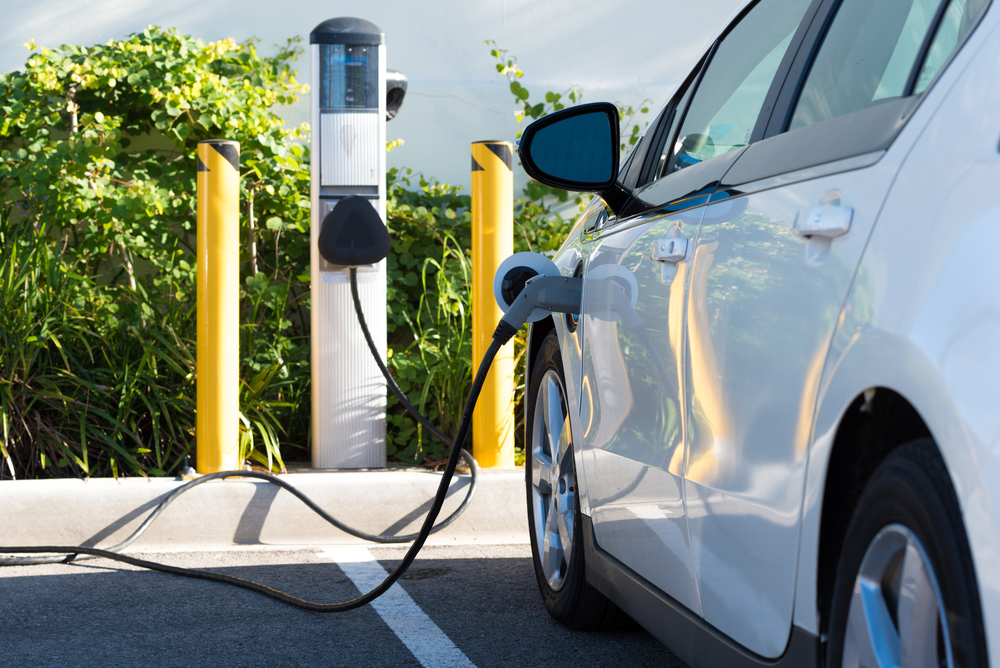Key Takeaways
- Supply-side regulations in the United Kingdom and Canada demonstrated how ambitious policy can drive electrification
- High EV adoption continued in established leaders, especially among the Nordic countries, with Norway leading at 80%
- Colombia and Chile surged beyond 100% year-on-year growth in EV sales
Electric vehicle adoption accelerates in 2024
The global shift towards electric vehicles (EVs) continued its momentum in 2024, bringing the prospect of mass adoption that much closer. This upward trend was mirrored among national government signatories to the Zero Emission Vehicles (ZEV) Declaration, who collectively represent 22%* of the global light-duty vehicle market. These countries demonstrated clear progress last year, achieving 9% growth in EV sales, totaling 2.7 million units compared to 2.5 million in 2023.
As shown in Figure 1, this growth trajectory was widespread, with seven out of the top ten signatories increasing their EV sales volume. The United Kingdom (571,558) and Canada (250,711) emerged as leaders in year-on-year sales growth, followed by strong performances in the Netherlands (192,344), India (125,038), and Denmark (98,065). Out of these top ten markets, India exhibited the largest year-on-year increase, growing by a robust 23%. This growth was overwhelmingly driven by demand for battery electric vehicles (BEVs), which constituted nearly all of their EV sales.
Figure 1: Top ten electric light-duty vehicle markets among national government signatories (2023-2024)
Source: EV Volumes, February 2025; Y Sement for India, February 2025
The effectiveness of supply-side policies in the transition toward electrification shows promising progress in major markets. The United Kingdom (UK) presents an interesting case, where EV sales volume jumped by 20%, propelling it to become Europe’s top EV market, moving ahead of France. This strong performance was significantly bolstered by the UK’s ZEV Mandate, which established a target of 22% ZEVs for new car sales in 2024, with plans to reach 80% in 2030. Crucially, this growth continued even after the end of purchase subsidies in 2022, suggesting how well-designed regulatory frameworks can effectively steer the market towards electrification.
Supply-side regulations in Canada provide another compelling example of effective policy, recording a noteworthy 66% increase in EV sales compared to the previous year. While the Zero-Emission Vehicle Incentive (ZEVIP) incentive contributed to this growth, the country’s long-term commitment, codified in the Electric Vehicle Availability Standard requiring 100% ZEV sales for new light-duty vehicles by 2035, helped maintain momentum even as purchase incentives phased out.
The electric vehicle landscape continues to grow across the Nordic region, where adoption rates remain consistently high. Norway remains a global frontrunner, with EVs consistently capturing over 80% of light-duty vehicle sales, inching closer to its 2025 goal of 100% ZEV sales. Other countries including Sweden (54%), Denmark (49%), Finland (45%), and the Netherlands (40%) also boast significant EV market shares, suggesting widespread consumer acceptance.
Figure 2: Global electric light-duty vehicle sales share of national government signatories (2023-2024)
Source: EV Volumes, February 2025; Y Segment for India data, February 2025.
Emerging economies driving the growing shift to electric vehicles
The pace of electrification is arguably most striking in emerging economies, which are now experiencing exponential growth in adoption rates. Latin American signatories to the ZEV Declaration exemplify this trend, showcasing some of the world’s fastest-growing EV market shares in 2024.
Colombia stands out as a primary example, with its EV market share surging by 127% year-on-year. This rapid acceleration was bolstered by a strong national commitment, evidenced not only by Colombia’s signature to the ZEV Declaration in 2024, but also through helpful fiscal incentives like reduced VAT and import duties that lower the upfront costs of electric vehicles.
In the last year, Chile and Mexico demonstrated substantial upwards momentum with a 116% and 74% increase in their EV market shares respectively. Chile’s EV market was invigorated by a number of factors, including fuel economy standards, which took effect in 2024 under the Energy Efficiency Law. Other government initiatives like tax exemptions, reduced import duties, and crucial investments in expanding the national charging infrastructure, further contributed to this impressive growth.
In Mexico, this significant uptake was driven by a confluence of heightening consumer demand and the foundational policy signals set by the government, including its updated Nationally Determined Contribution and CO2 emissions standards for LDVs. Moreover, a critical factor accelerating EV adoption across Latin America, including in these two markets, has been the increasing availability of more affordable EV models, particularly from Chinese automakers, which helps consumers overcome the long-standing barrier of high upfront vehicle prices.
Strong market performance across Latin America suggests the region is highly responsive to policy signals and dedicated to a faster EV transition. This growth indicates that the broader market may accelerate even faster towards its goals if supported by stronger, dedicated supply-side regulations aligned with their ZEV commitments.
Accelerating the global shift: harnessing momentum
The growing momentum behind electrification is undeniable, confirmed by significant strides in 2024. The experiences of leading ZEV Declaration national government signatories underscore a vital lesson: ambitious national commitments, when translated into robust policies – such as CO2 emission standards, ZEV mandates, and supportive fiscal incentives like tax exemptions and reduced import duties – are powerful catalysts for market transformation.
While these frontrunners illuminate the path forward, substantial opportunities remain untapped in regions where policy frameworks are less developed. Closing these regulatory gaps and broadening the implementation of proven strategies will be paramount to ensuring a truly global, swift, and equitable transition to clean transportation.
*This figure represents national signatories where there is information available. These include Austria, Belgium, Canada, Chile, Colombia, Croatia, Denmark, Finland, France, Greece, Iceland, India, Ireland, Israel, Lithuania, Luxembourg, Mexico, Netherlands, New Zealand, Norway, Poland, Slovenia, Spain, Sweden, Türkiye, Ukraine, and the United Kingdom.

